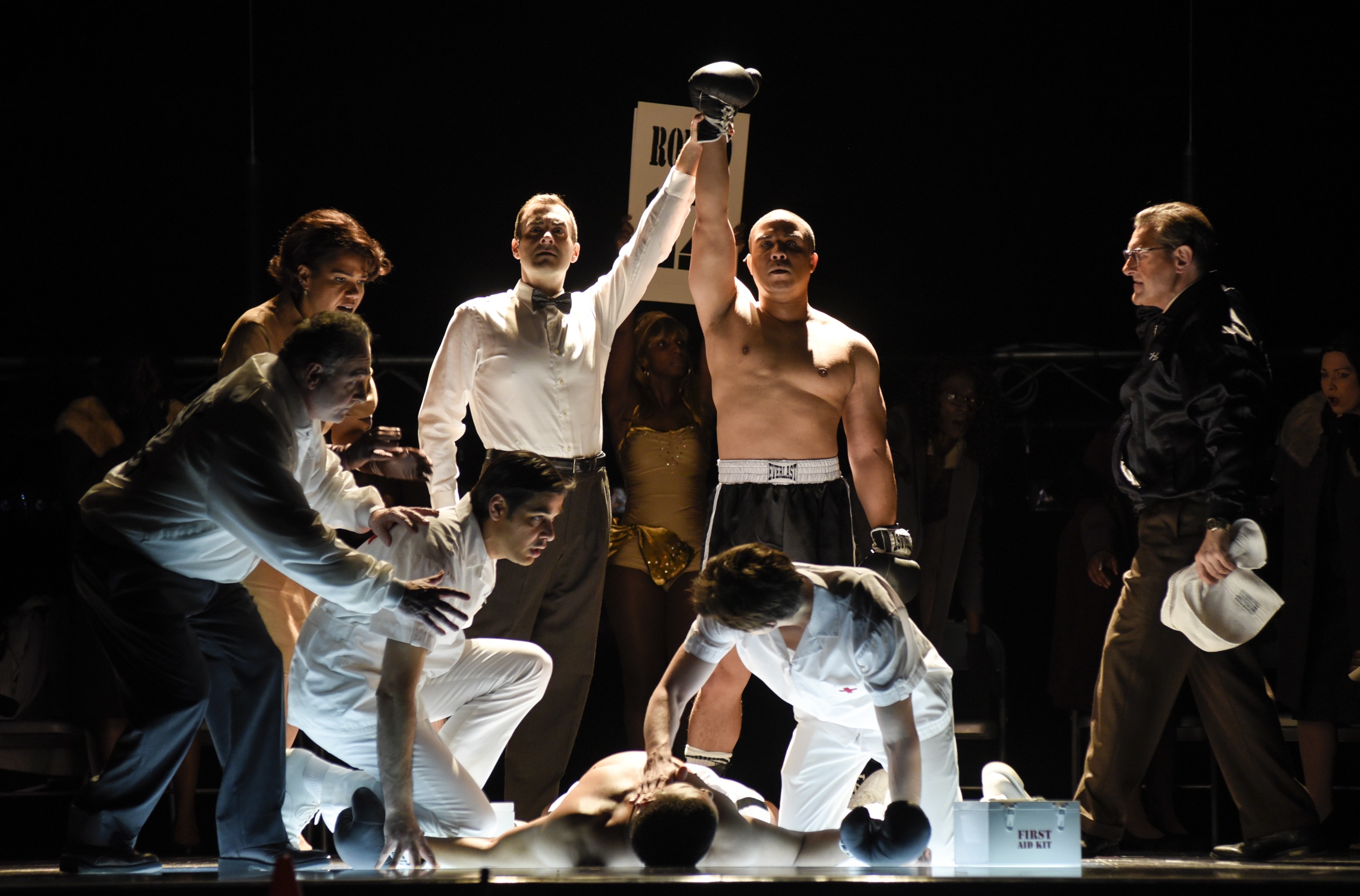Jazz meets romance and controversy in Canadian Premiere of Champion
“I kill a man and the world forgives me. I love a man, and they want to kill me.”
While many know the opera to be the platform for musical renditions of traditional works such as The Phantom of the Opera and The Barber of Seville, Champion delves into more modern themes, such as sexuality and immigration.
In its Canadian Premiere, Champion, which is based on a true story, recounts the life of prizefighting welterweight champion Emile Griffith. Griffith was born in St. Thomas, of the U.S. Virgin Islands, but immigrated to the U.S. in the 1950s as a teen in search of a better life. He had a deep desire to reconnect with his estranged mother, who left for America on her own. As well, Griffith dreamed of becoming a singer, baseball player, and hat designer hooked in by the American dream. Griffith worked in a hat factory before being introduced to the world of boxing after the factory manager noticed his physical potential.
Griffith saw major success in the sport, though the fame and money did not come without its troubles. As his popularity grew , Griffith was was ushered into a new world. The newfound attention and stardom he faced brought him to terms with the feelings he attempted to suppress—even from himself. Though, after accidentally killing an opponent in the ring—one who taunted his presumed sexuality pre-fight—Griffith’s inner demons began to reveal themselves.
“It isn’t the opponent you wanted to kill, it’s yourself,” said Griffith during a flashback scene to his younger self.
Throughout Champion, Griffith is portrayed by three different actors, each of whom are present in different scenes of the opera’s non-linear plot. Griffith as a child, adult, and senior, illustrate the protagonist at different integral stages of his life. Young Griffith demonstrates the molding of the prizefighter as a child in St. Thomas; Griffith as an adult highlights his battles with his sexuality and fame; Griffith as an old man represents the consequences of his profession, as his dementia begins to set in.
As the opera unfolds, Griffith as an old man appears in various scenes, speaking to his younger selves in a one-way manner: he can hear them, but they cannot hear him. This creative way of carrying out flashback scenes demonstrated Champion’s thoroughly well-thought-out plot.
The opera’s music was composed by the Grammy Award-winning jazz trumpeter, Terence Blanchard. With a smooth blend of jazz and blues, the production’s musical aspect embodies all the events that unravel and the emotions that go along with them.
The production’s cast expertly brought Griffith’s trials and tribulations to life, both musically and theatrically. Their unwavering vocal performances and hypnotically realistic acting transformed the 2h25min show into what felt more like an explanation of Griffith’s life than a musical dramatization.
Aside from the actual performance by the cast, a theatrical production’s technical aspects share equal importance in making the show. Though, Champion’s technical expertise clearly shined through in its execution. Two jumbo vertical screens on either side of the stage displayed different images and designs throughout, adding to the precise, yet creative, props and set design.
Together, they set the ambience for each of the opera’s scenes, whether it was a boxing fight or at the nightclub Griffith frequented. Paired with crisp set changes, the combination of the digital and traditional aspects of the set transformed Salle Wilfrid-Pelletier into Griffith’s world.
With the themes of immigration and sexuality arguably more relevant today than ever before, Champion is an opera that, aside from its great execution musically, technically, and theatrically, is a contemporary representation of the future of opera.
Champion has three more showings with the Opera de Montreal on Jan. 29, 31, and Feb. 2. Tickets are available for purchase on the Opera de Montreal website.
